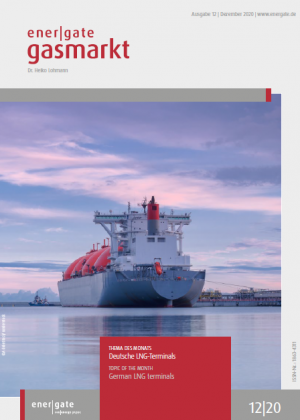Topic of the month: German LNG terminals
No, there still has not been a final investment decision (FID) on a German LNG terminal. On the contrary, Uniper announced on November 6 that binding demand for capacity in the open season for the Wilhelmshaven project was not high enough to support a final investment decision. At least for some – but not everyone – this news was suprising.
On the other hand, the Brunsbüttel terminal made a step forward on its path towards an FID. BNetzA sent the draft of a decision for an exemption from regulated third-party access for the terminal. The draft is not yet the final decision, but for the project company it is a critical milestone on the way to a positive investment decision. That is at least what the project company posted on its web page. The responsible BNetzA Ruling Chamber (BK) 7 was allegedly a bit surprised to learn about the post.
In the following, I shall attempt to explain the failure of the open season. The opportunity will be also used to give an update of the other projects. Presumably, the projects Wilhelmshaven and Brunsbüttel have some interrelations anyway, as will be reported.
RahmenbedingungenRegulierung von Wasserstoffnetzen
Die BNetzA hat im November eine Zusammenfassung der Stellungnahmen zu Ihrer Konsultation einer möglichen Regulierung von Wasserstoffnetzen veröffentlicht (ener|gate Gasmarkt 10/20). 63 Unternehmen, Verbände, Forschungseinrichtungen und Behörden (Landesministerien) haben schriftlich Stellung genommen. Überraschend viele, meinte die Regulierungsbehörde. Da die Stellungnahmen wohl auch lang und nicht immer ganz konsistent waren, muss die Auswertung eher mühselig gewesen sein. So liest es zumindest der Autor dieser Publikation zwischen den Zeilen. Nur 33 haben der Veröffentlichung zugestimmt. Ein Teilnehmer meinte, dies läge nicht an den vielen Geheimnissen in den Stellungnahmen, oder dem Wunsch die Teilnahme zu verbergen. Die Positionierung der Zustimmungserklärung auf der Internetseite der Behörde sei schlicht etwas unglücklich gewesen. Die Zusammenfassung enthält keine eigene neue Einschätzung der Behörde zur Regulierungsnotwendigkeit und den Stellungnahmen. Die inhaltlichen Positionen in den Stellungnahmen bezeichnet sie als „differenziert“. Diese Differenziertheit wird auch in den einzelnen Auswertungen immer wieder aufgezeigt. Ihre eigene Position hatte die Behörde in ihrer Bestandsaufnahme deutlich gemacht (ener|gate Gasmarkt 08-09/20). Daran hat sich wohl nichts Grundsätzliches geändert. Die Zusammenfassung enthält auch keinen Hinweis zu dem konkreten weiteren Vorgehen.
Framework conditionsRegulation of hydrogen networks
In November, BnetzA published a summary of the stakeholder statements on its consultation of the possible regulation of hydrogen networks (ener|gate Gasmarkt 10/20). 63 companies, associations, research institutions, and public authorities (federal state ministries) submitted statements. The regulatory authority was surprised by the high number. As many of the statements were long and sometimes inconsistent, the analysis was cumbersome. This is what the author of this publication reads between the lines. Only 33 stakeholders agreed to publish the statements. One participant told ener|gate Gasmarkt that he or she did not think this was because the companies had many secrets to reveal or that they did not want to reveal that they had submitted statements. The position of the agreement for publication was simply not very well positioned on the authority’s web page. The summary does not contain a new assessment of BNetzA about the regulatory requirements or an evaluation of the statements. The authority only characterises them as “differentiated”. This differentiation is also demonstrated in all of the more detailed descriptions. The authority elaborated on its thoughts about the regulatory requirements for hydrogen networks in its status report (ener|gate Gasmarkt 08-09/20). The summary paper does not give any clue about the further procedures either.



